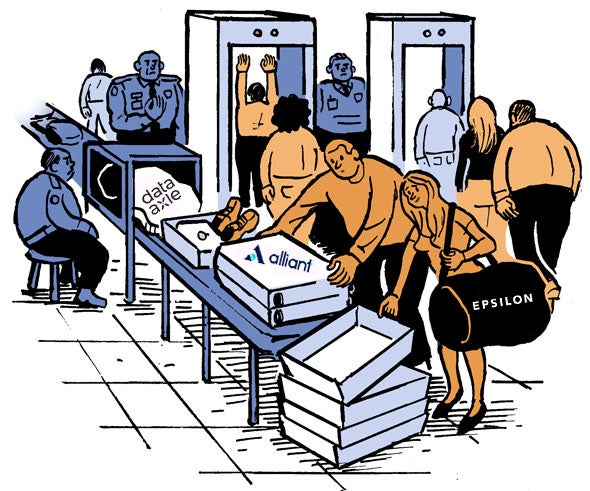The ad industry spends a lot of time lamenting signal loss.
But the quality of marketing data – or, rather, the lack thereof – is arguably as big of an issue and doesn’t get nearly as much ink (despite past industry efforts to come up with data quality standards).
According to numbers from data validation provider Truthset, 73% of ads targeting Black people are wasted, 39% of gender-based targeting budgets are misspent and 83% of age segments are inaccurate.
Most marketing data sets, whether we’re talking about online behavioral data, prepackaged segments in a DSP or even offline CRM data, are riddled with inaccuracies, and there hasn’t been a consistent mechanism for verifying what’s good and what needs to get tossed, said Scott McKinley, CEO and founder of Truthset.
“What we’re essentially talking about here is the fuel that everyone in the ecosystem is putting into their engines, and there isn’t really any accountability,” said McKinley, who spent more than seven years in executive roles at Nielsen before founding Truthset in 2019.
After raising seed funding in mid-2020, Truthset started building what it calls a data collective, which allows data providers to anonymously upload their data to Truthset for a quarterly cleansing of sorts.
On Wednesday, the collective, which already includes Epsilon, Alliant, Data Axle, Stirista and Verisk, came out of private beta and opened up generally to other data providers.
Trust, but verify
One of the reasons why marketing data quality is so bad is because there hasn’t been an incentive to clean up.
“I was told point blank by a large data provider: ‘The buyer wants scale. I can’t monetize accuracy,’” McKinley said. “And then everyone else is in cover-your-eyes-and-hold-your-nose mode buying these impossibly large audiences just to fulfill a brief, like, ‘I need 20 million new moms in Kansas City,’ even though there might only be a few hundred thousand in that DMA.”
Truthset maintains multiple validation data sets (essentially truthsets, with a lowercase “t”) that it gets from independent data sources, including US census databases and research grade panels.
From there, Truthset matches hashed email addresses against the validation sets, which span roughly 1.4 million people, to score the overall accuracy of first-party or third-party consumer data sets.
The purpose of the collective is to give members an opportunity to anonymously compare and benchmark their data segments against a group of their peers.
That might sound like a co-op setup, but it’s a different animal, McKinley said.
As opposed to a data co-op, where smaller contributors usually benefit more than larger ones, parties in the collective don’t actually pool data. Rather, members are independently tested against the validation sets so they can get a sense of where they rank in terms of accuracy for different attributes, such as ethnicity or gender.
“We’re not stopping people in the street to verify their gender,” McKinley said. “But it’s still really useful, because we can set a strict accuracy threshold and add and remove customer records based on that.”
Precisión
Although marketing data is a mess in general, the situation is often even worse for multicultural segments.
“The lack of representation of Hispanic audiences in current third-party data sets is astounding,” said Daniel Aversano, SVP of data, analytics and advanced advertising at TelevisaUnivision, which owns Spanish-language broadcast network Univision.
One of the main issues is that data often isn’t inclusive to begin with. If there isn’t accurate representation at a macro level, “the challenges only compound when it comes to targeting specific segments,” he said.
Univision recently partnered with Truthset to analyze the quality of in-market Hispanic audience data and found that around 70% of campaign impressions supposedly served to Hispanic audiences were not being delivered to Hispanics.
To combat the waste, TelevisaUnivision, Univision’s parent company, launched a Hispanic household data graph at the upfronts earlier this year. In late November, Omnicom Media Group signed on as the first agency to start using the graph for media planning, buying and measurement.
“Advertisers need to have a comprehensive view of this audience in order to fulfill the desired outcomes of a campaign,” Aversano said. “The distorted industry approach has resulted in poor user experiences, misidentification and lost media efficiency and opportunity.”

















